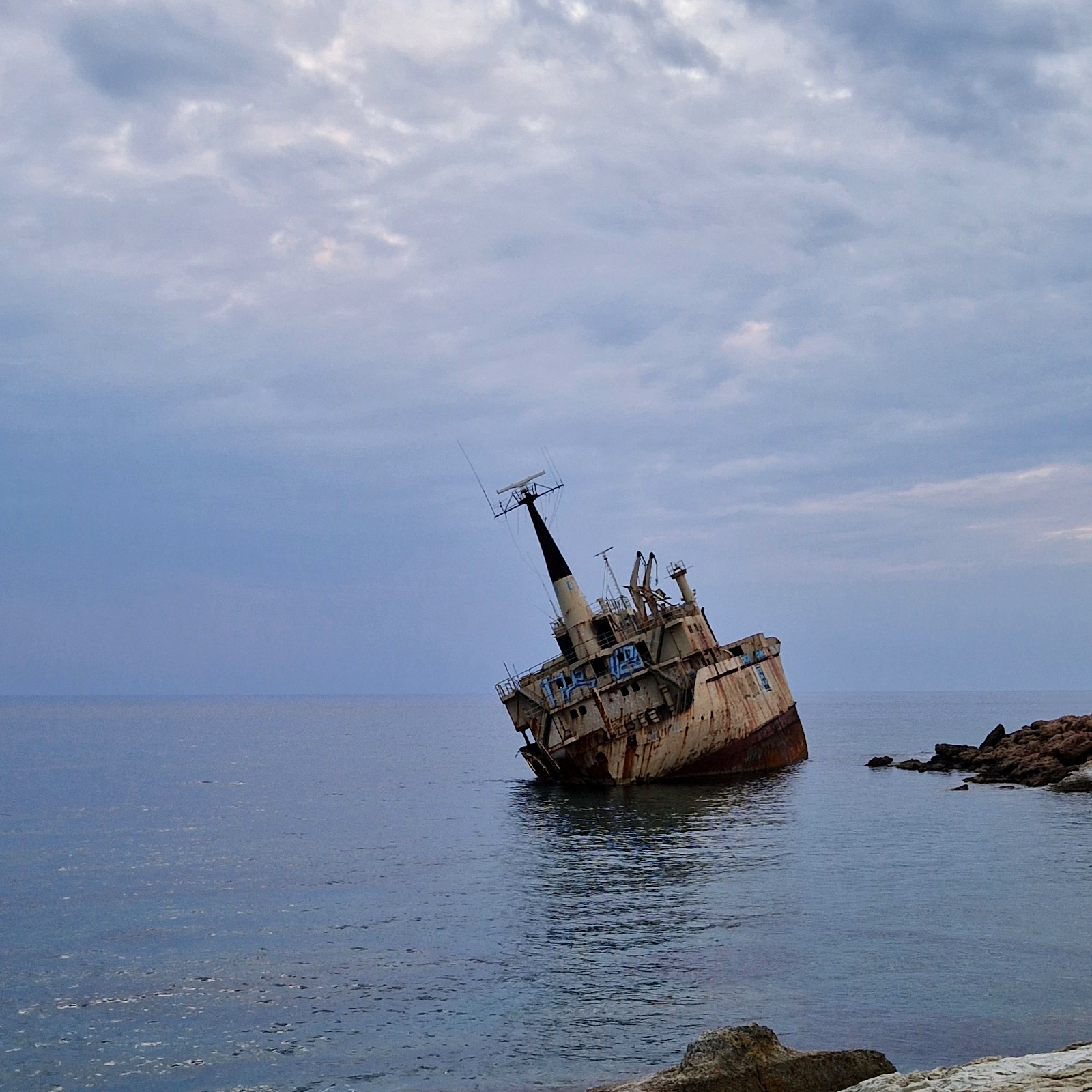The Edro III Shipwreck
Cyprus’ Most Photogenic Maritime Relic
Just off the rugged coastline near Peyia, in the sea caves area of Paphos, lies one of Cyprus’ most iconic and visually striking landmarks — the Edro III shipwreck. This rusted cargo vessel, stranded dramatically on the rocks since 2011, has become a favorite spot for photographers, nature lovers, and curious travelers. With its haunting beauty and stunning surroundings, the Edro III offers a unique glimpse into Cyprus’ modern maritime history and coastal landscape.
The Edro III was a Sierra Leone-flagged cargo ship built in the 1960s. In December 2011, while sailing from Limassol to Rhodes carrying a load of plasterboard, the ship encountered rough seas and strong winds off the western coast of Cyprus. Battling stormy weather, the vessel drifted off course and struck the rocks near the Sea Caves area of Peyia.
Fortunately, all nine crew members — seven Albanians and two Egyptians — were safely rescued by a daring helicopter operation carried out by the British Bases stationed on the island. The ship, however, remained stranded, leaning dramatically against the jagged shore, where it still sits today.

The Edro III has become an unexpected tourist attraction thanks to its dramatic setting and weather-worn, skeletal appearance. The rusted hull, tilted slightly toward the sea, creates a striking contrast against the turquoise waters and golden hues of the surrounding cliffs. The area is especially popular at sunset, when the sky turns shades of orange, pink, and purple, framing the wreck in a truly unforgettable light.
While access onto the ship itself is prohibited for safety reasons, visitors can walk along the rocky shore to view it from different angles. The nearby Sea Caves and coral-studded coastline provide additional scenic value, making the entire area one of the most photographed spots in western Cyprus.
What makes the Edro III shipwreck truly captivating is its stillness — it appears frozen in time, a relic of the sea preserved by nature. For many, visiting the site is not just about photography, but also about reflecting on the raw power of nature and the unpredictable journeys of those who sail the seas.
The shipwreck is also a fantastic place for coastal walks, picnics, and wildlife spotting. The surrounding area is rich in marine life and bird activity, and in the springtime, wildflowers bloom along the cliffs. Nearby, adventurous visitors can explore the sea caves and natural rock pools carved by centuries of wave action.
The Edro III is located just north of Coral Bay, near the Sea Caves area of Peyia, and is easily reachable by car. From Paphos, it’s about a 20–25 minute drive along the coastal road. There is a small dirt parking area near the shipwreck, and from there, it’s a short walk over rocky terrain to reach the best viewpoints.
While the area is largely undeveloped (which adds to its charm), visitors should wear comfortable shoes and take care on the uneven surfaces, especially near the cliffs.
Best Time to Visit: Sunset is magical here — the lighting is perfect for photos and the atmosphere is peaceful.
What to Bring: A camera or smartphone, comfortable footwear, and water, as there are no facilities directly at the site.
Nearby Attractions: After visiting the shipwreck, continue exploring the Sea Caves, Agios Georgios Church, or relax at nearby Coral Bay.
The Edro III shipwreck is more than just a maritime accident — it’s a powerful symbol of nature’s strength, a dramatic coastal landmark, and a favorite spot for locals and visitors alike. Whether you’re drawn by the photography opportunities, the dramatic scenery, or the story behind the wreck, a visit to this site offers a unique and unforgettable glimpse into Cyprus’ rugged beauty.
